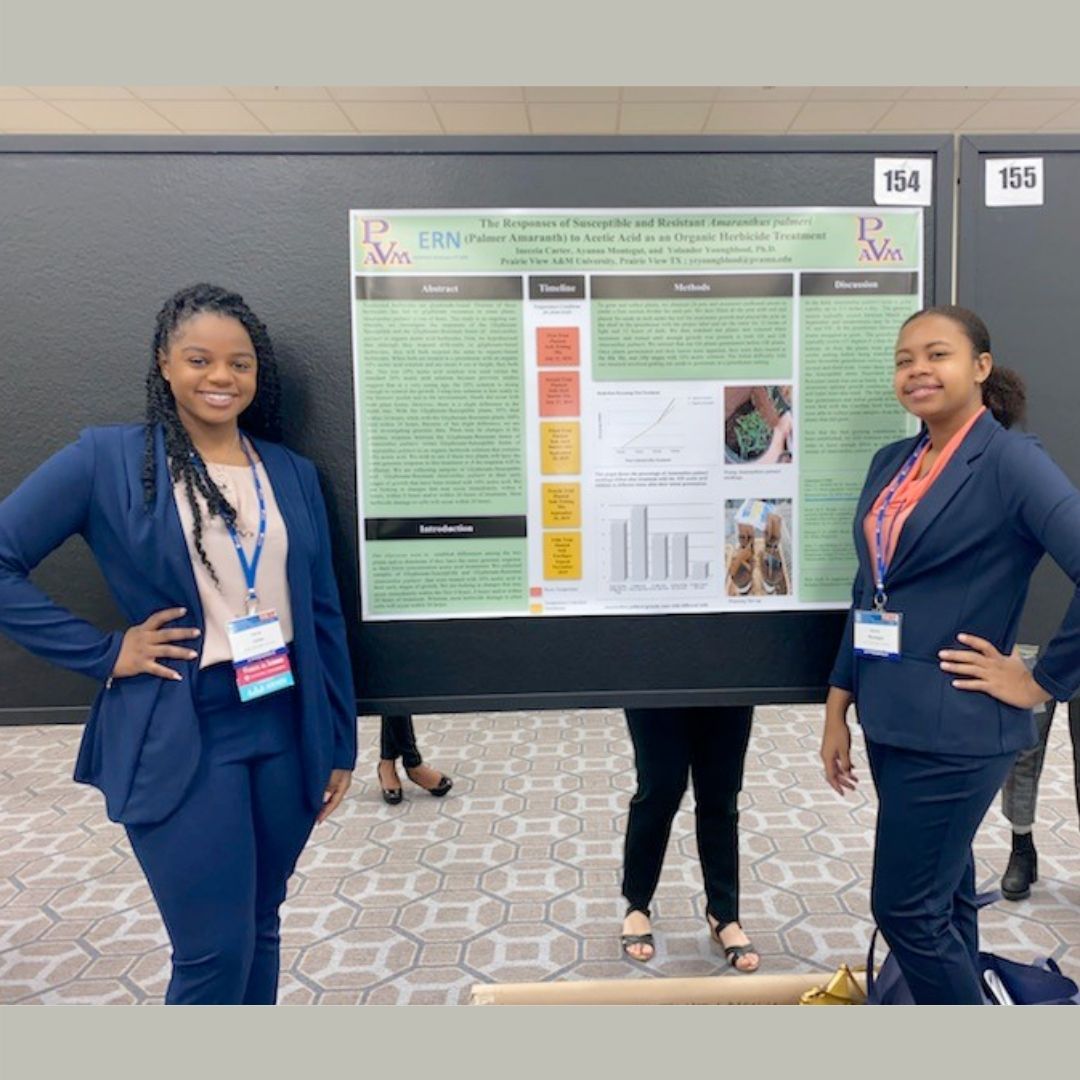Research is an essential component to academics, and Prairie View A&M University has long been a leader in allowing professors and students to showcase their work. The university’s faculty are recognized as leaders in their field, and they provide exceptional opportunities for students to conduct research of their own.
Recently, two PVAMU students, sophomore biology majors Ineceia Carter and Ayanna Montegut, presented their work at the Emerging Researchers National (ERN) Conference in STEM in Washington, D.C. The pair presented a poster, “The Responses of Susceptible and Resistant Amaranthus palmeri (Palmer Amaranth) to Acetic Acid as an Organic Herbicide Treatment.”
“Amaranthus palmeri is a noxious weed, and farmers have traditionally used glyphosate-based pesticides to treat it. Because they used so much of this pesticide, some Amaranthus palmeri have developed resistance to it. That’s led to the need for other safe organic pesticides. Since there are still some forms that are susceptible to the pesticides, the research project seeks to determine if both forms will respond to organic pesticides with acetic acid the same way,” Yolander Youngblood, Ph.D., assistant professor of biology in PVAMU’s Brailsford College of Arts and Sciences, said about the research.
Carter and Montegut are both researchers under Youngblood, whose work was the foundation for the students’ presentation.
“The conference provides an opportunity for STEM undergraduate and graduate students at HBCUs and other colleges and universities that include students who are underrepresented minorities or persons with disabilities to present their research and gain valuable skills to prepare them for a global workforce,” said Youngblood.
Carter and Montegut were among more than 650 undergraduate and graduate students presenting posters and delivering oral presentations at the conference, which took place Feb. 6 – 8. More than 200 colleges and universities were represented. Any student who conducted research with a professor or school that has an NSF CREST grant or HBCU-UP grant or LSAMP grant was eligible to submit research projects, and Youngblood says that while the process for acceptance to the conference is competitive, being able to present is an incredible opportunity.
“This event gives our school and students more exposure,” she explained. “It provides them with networking tools and workshops. Their interpretation and presentation skills are greatly enhanced. They also get recruited by much larger graduate programs.”
The conference was hosted jointly by the American Association for the Advancement of Science and the National Science Foundation.
###
By Holly Beretto

